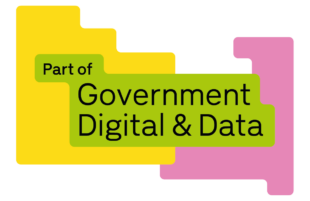
Susie Friedman

Feroze Rub

This blog post explores how we increased collaboration and knowledge sharing among distributed policy teams through an innovative approach.
The Department for Business and Trade (DBT) is committed to removing barriers to trading and investing abroad for United Kingdom businesses. When businesses report barriers they face, there is a cross-government effort to resolve the barrier quickly and efficiently. The Digital Market Access Service (DMAS) facilitates the management of trade barriers. We recently introduced a comparison and recommendation engine to improve knowledge sharing across global teams.
User Research: A team sport
We often discuss involving the whole team in user research to improve user empathy. However, ensuring everyone participates in the entire process - from deciding what to learn, attending sessions, and analysing insights - also increases the likelihood of identifying more diverse user problems.
Several rounds of user research revealed these themes:
- users felt they were not learning from other teams solving similar barriers due to distributed teams worldwide
- different teams used different language to describe the same issues in free-text fields. There was low completion of structured fields like Sector, making barriers hard to find
- the administrative burden of finding and removing duplicates was high
On DMAS, much barrier detail is held in free-text descriptions rather than structured fields. This meant traditional search engines could not effectively mine the 'semantic' meaning of a barrier. One user provided an example of a monthly task. After downloading the dataset of over 3,000 barriers, they would have to run through a complex search of over 50 keywords to find all relevant barriers.
An innovative solution
Improving search and data quality are common goals for case management systems, but our developers saw a different solution. We could help users find barriers similar to theirs using a recommendation engine. Just like Netflix recommends new films to watch, or Tesco recommends items to add to your basket, users would learn from, or deduplicate, the similar barriers we “recommend”.
From lean prototype to 'truly revolutionary' deployment
DBT has quarterly 'firebreaks' where employees can take a week away from their usual work to tackle a problem and drive positive outcomes for the department. During one of these firebreaks, our team developed a testable prototype using a small language model, all-MiniLM-L6-v2, to convert trade barriers into numerical representations. This enabled semantic search based on similarity metrics, making it possible to find related content—something that was previously impossible with a keyword-based approach.
Once approved for 'real data' use, we granted super-users early access to the new ‘Related Barriers’ feature, fine-tuning the similarity parameters based on their expertise.
Early adopters provided incredibly positive feedback. They described "seeing some barriers [they] would never have found otherwise" and "reaching out to [another] team to learn more [about a similar barrier] because I think we can resolve it together."
Demystifying AI
The Alan Turing Institute paper which underscores DBT's approach to Artificial Intelligence (AI) requires that any AI be explainable to users who interact with it. Discovery and usability testing taught us that users assumed the 'similarity score' would be generated based on finding similar words like "Whiskey" and "Whisky" in the title and description. (This is closer to a 'bag of words' approach).
The algorithm does not read text the same way people do. Instead, it encodes the title and description into a numerical vector representation that captures their meaning. It then compares these vectors to calculate a similarity score. We tested a couple of explanations with users, settling on :
‘To calculate how related the barriers are, we use a neural-network-based algorithm which understands the context of the title and summary and compares it to other barriers.
It does this by comparing the entire text at once for similarities, rather than picking out the context of each individual word. So, the algorithm focuses more on the pattern or shape of the content.
A good way to think of this is how you might compare different types of shapes. For example, the model might understand one barrier as a yellow labrador. Potential duplicate barriers might look like a black labrador or a golden retriever. Whereas barriers which are poor matches might look like a Staffordshire terrier . While they are all dogs, labradors and retrievers are much more similar than a Staffordshire terrier, and the technology can understand this nuance.'
Next steps
Related Barriers has been live since January 2025 making it part of the growing number of AI proof of concepts making it into production. A growing number of internal users have been interacting with it and finding relevant barriers on the service.
The DMAS team is continuing to explore AI solutions for user and business problems. We are currently running experiments to understand if Generative AI can produce high-quality titles and summaries for businesses to see. We are also exploring whether Generative AI can summarise company interactions across DBT products. This could assist teams by providing greater context and identifying opportunities for resolved barriers.
Broadly, DBT is currently building the infrastructure to self-host Large Language Models. It will allow product teams and data professionals to safely use AI to solve user needs with sensitive data. Our AI governance is being evolved to encourage innovation and experimentation while enabling secure and ethical use.
Read more about how our governance framework is enabling the responsible use of AI here.


1 comment
Comment by Victoria Ramsden posted on
What a fantastic project! This is truly an example of leading with integrity to do things better with the operating context being set up to enable and facilitate the space for projects/real life business problems to be worked on and the dedication of colleagues to come together to work collaboratively.
Thank you for sharing this exemplary practice, we can all take a leaf out of your book!